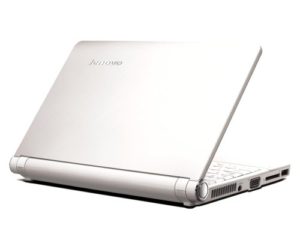 Netbooks small, lower-powered, and inexpensive laptops with an emphasis on Internet connectivity rather than general purpose computing are a big new category in computer sales. With entrants such as the Asus EeeePC, MSI Wind, HP Mini, and Lenovo IdeaPad, most of the major vendors (with the notable exceptions of Apple and Dell) are moving into this market. Netbooks are typically priced within $100 of the $400 mark.
Netbooks small, lower-powered, and inexpensive laptops with an emphasis on Internet connectivity rather than general purpose computing are a big new category in computer sales. With entrants such as the Asus EeeePC, MSI Wind, HP Mini, and Lenovo IdeaPad, most of the major vendors (with the notable exceptions of Apple and Dell) are moving into this market. Netbooks are typically priced within $100 of the $400 mark.
It takes work to get down to $400: Smaller screens, no CD or DVD reader, lower capacity hard disks, and low-cost, slower, mature components. The processor is usually either the Intel Atom or the Via C7-mobile and they universally use low-end integrated graphics and network connectivity chipsets. This means that they can’t really handle 3D games or CAD work, and they’re not suited to high-speed data transfer on a wired network. They also include less memory than today’s typical laptop either 512MB or 1GB. Having fewer ports typically two USB ports, a wired network port, and an analog or digital video port, also reduces cost. All have Wireless G, but most do not have Bluetooth. A few have express-card slots that allow for expansion, however. They run Linux, Windows XP Home, or Windows Vista Basic, usually based on whether or not they have enough RAM for Vista. Many are available in editions that use a small amount of flash memory as a solid-state disk and can only run Linux.
The Lenovo IdeaPad has hit most of the compromises perfectly. It uses Windows XP Home (Vista Basic adds literally nothing of value with these older components) and has literally no unnecessary crapware to be removed.
It has a nice, bright screen, loud-enough speakers for one person to watch a movie, and the keyboard is small but not too small (although the placement of the right shift key is annoying), The screen is suitable for movie watching and the computer is capable of streaming Netflix Instant movies wirelessly at full resolution without pausing.
Most importantly in my opinion, the Lenovo has an ExpressCard slot, which makes it possible to add any port you need. This remedies a lot of the shortcomings of a Netbook and opens them up to use as a general-purpose computer. I use the ExpressCard slot to add a gigabit network port (to compensate for the fact that the built-in wired port is only 10/100) and to install flash memory for backups. Unfortunately, the ExpressCard slot is not full-length: About a half inch of the card will protrude when fully inserted which makes it difficult to leave an adapter in the machine routinely.
The ASUS Eeee PC and MSI Wind Netbooks get a lot of attention online, but only the original HP Mini compares favorably to the Lenovo in my opinion, and it cost nearly twice as much. For the money (and that’s the idea behind the NetBook category), the Lenovo IdeaPad S10 compromises less and delivers more than any other Netbook on the market right now.
